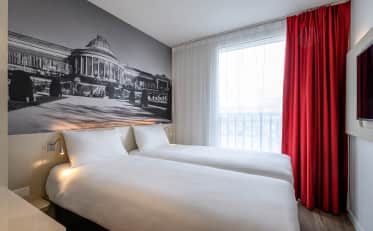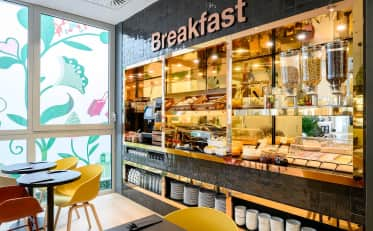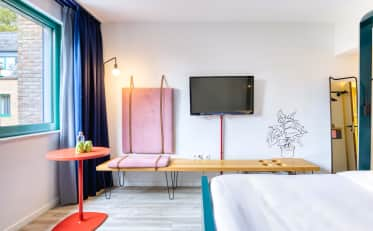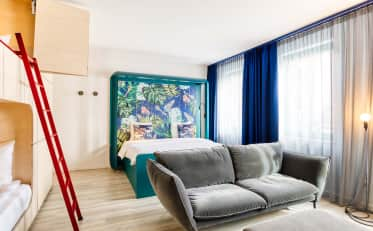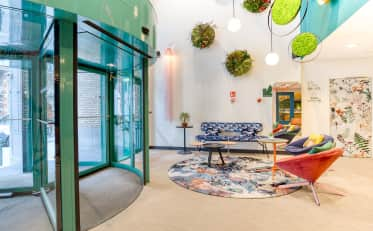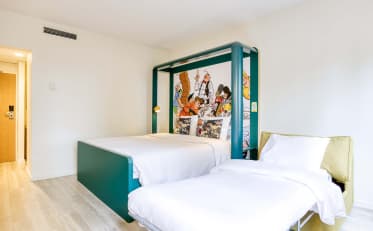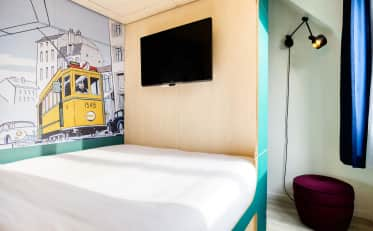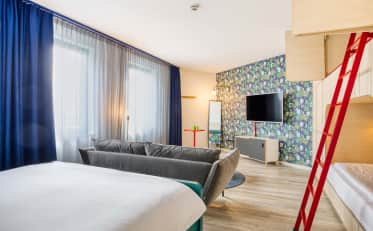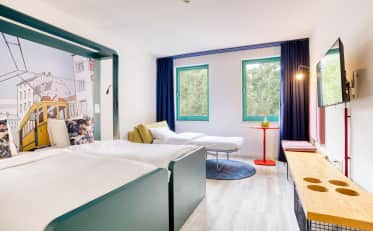
Best neighborhoods in Brussels: 6 districts to explore!
Discover the many faces of Belgium's fascinating capital with its eclectic architecture by exploring 6 of its districts! You'll be surprised by all the contrasts and treasures. Brussels and its outlying districts have a lot to offer!
1. Brussels centre: the most famous and must-see district
With its cobbled streets, emblematic buildings, remarkable 17th-century architecture and its Grand-Place, a UNESCO World Heritage Site, the historic centre of the capital is a must-see area. Also known as "The Pentagon", it is a perfect blend of culture and history.
You can discover its many hidden treasures and gems of Belgian heritage:
the Town Hall and the King's House ;
the small Manneken-Pis statue or its female version Jeanneke-Pis in the rue des Bouchers;
the Royal Palace of Brussels ;
the Galeries Royales Saint-Hubert;
Murals on the theme of comic strips;
the Magritte Museum or the Musical Instruments Museum;
the Saints-Michel-et-Gudule Cathedral.
You can do it all by foot. Turning down one of the alleyways you'll come across typical Brussels restaurants, chip shops and chocolate makers.
2. Marolles: a place with a vibrant local life
To discover the true spirit of Brussels, head for the popular Marolles district, located between the Gare du Midi station and the Sablon hill. The Marolles district is a far cry from the hustle and bustle of the historic centre. Here you'll find many secondhand, antique and brocante shops. The area owes its reputation to its daily flea market on the Place du Jeu de Balle. Vintage shopping and upcycling session in view!
In this neighbourhood, you can experience Brussels life in its purest form. There are plenty of bars, restaurants and cafés where you can enjoy local dishes and a good Belgian beer. There are even some old estaminets and bistros offering a laid-back atmosphere.
In Les Marolles, as in many other districts of the capital, art is abundant. Facades are covered in colourful illustrations and graffiti. Chances are you'll come across your favourite comic strip characters!
3. Sablon: renowned for its traditional medieval architecture
Not far from Marolles, you can visit Sablon, an elegant district of the Brussels-Capital Region, originally home to the aristocracy.
You'll certainly notice differences between the Sablon and Marolles. The area, with its medieval Gothic architecture, is divided into two zones: the Petit Sablon and its French-style square, and the Grand Sablon and its famous pedestrian square.
It boasts numerous art galleries and an antiques market at the foot of the majestic Notre-Dame church.
Baroque houses from the 17th century surround the Place du Grand Sablon. It's a sight not to be missed for art lovers on a trip to Brussels. And also for gourmets! This district is a chocolate paradise, where you'll find a host of craftsmen, including the famous chocolatier Pierre Marcolini (also present on Avenue Louise and in the Galeries Royales Saint-Hubert).
4. Ixelles: a peripheral town offering lively neighbourhoods
IIxelles is a municipality in the south-east of Brussels. Expatriates and tourists appreciate its wide variety of attractions. It is also home to two universities, and therefore hosts a large number of students. It's a lively and dynamic place, and a hot spot for Brussels nightlife. Ixelles is made up of a number of trendy districts, including Châtelain, Toison d'or, Flagey and Matonge, known for its strong African influence.
It is very well served by public transport from Brussels airport and Brussels-Central station. You can easily get there for shopping sessions or gourmet breaks in fine restaurants and cocktail bars. It's a must-visit district for a romantic break in Brussels!
5. Saint-Gilles: a cosmopolitan and bustling district
As neighbours, Ixelles and Saint-Gilles share similar characteristics. Saint-Gilles is a peripheral town with lively neighbourhoods and trendy cafés, bars and restaurants. The city's nightlife is also highly appreciated.
Saint-Gilles does, however, boast a multicultural atmosphere with its diverse population. It also has a strong artistic heritage. We can admire its neo-renaissance buildings and its Art Deco and Art Nouveau mansions.
Saint-Gilles also has a lively main square, the Parvis Saint-Gilles: a place that becomes very animated in summer with a multitude of cafés, restaurants with terraces and authentic and trendy bistros. The area is also known for its many organic and fair-trade shops.
6. The European Quarter: a cultural and tourist attraction
Let's finish our city tour with Brussels' finest districts, the European Quarter, which is divided into three parts: Brussels, Etterbeek and Ixelles. This area, steeped in history, is the capital's second most popular tourist destination. In fact, the district has a lot to offer.
It is, of course, first and foremost a business district housing the largest European institutions, including the European Parliament and the European Commission. You can even visit some of these institutions!
The district also offers a number of delightful parks and green spaces, magnificent Art Nouveau mansions, trendy venues and museums of all kinds (Museum of Natural Sciences, Autoworld, Parlamentarium, etc.).
It's a cultural and eclectic district that you're sure to enjoy with your children during your family trip to the capital!
Looking for accommodation in Brussels? Contact us and take advantage of comfortable rooms at low prices!
Find here our B&B HOTELS in Belgium
Our B&B HOTELS accessible to people with reduced mobility



























